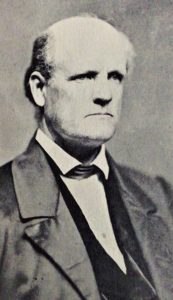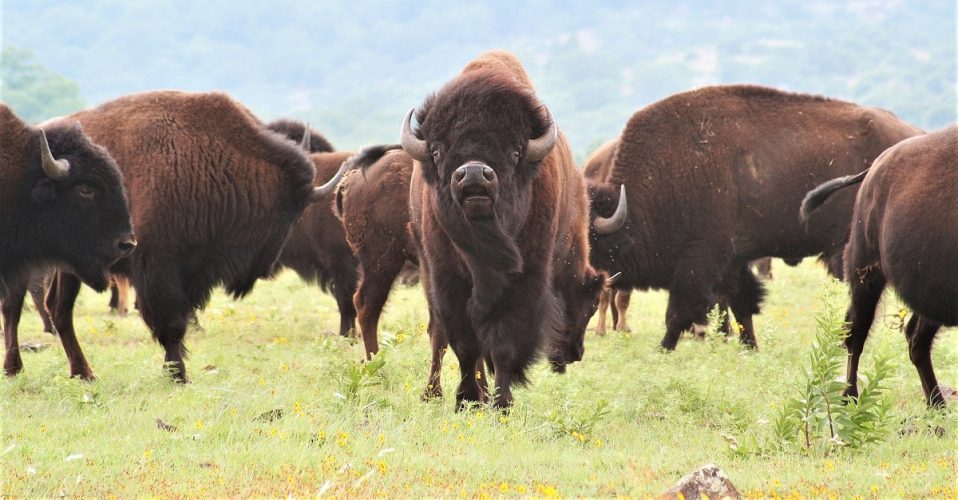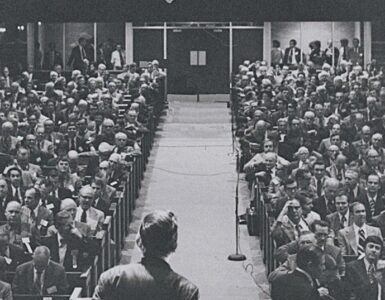 Alexander Taylor was born December 4, 1803 to Richard and Isabella (Steel) Rankin in Dandridge, Tennessee. His parents were originally from Augusta County, Virginia and had moved for better opportunities in east Tennessee. Alexander was next to the last child born in a household of eleven sons and one daughter. The Baltimore Sun reported that according to Alexander’s memories of his home life
Alexander Taylor was born December 4, 1803 to Richard and Isabella (Steel) Rankin in Dandridge, Tennessee. His parents were originally from Augusta County, Virginia and had moved for better opportunities in east Tennessee. Alexander was next to the last child born in a household of eleven sons and one daughter. The Baltimore Sun reported that according to Alexander’s memories of his home life
His mother became a sort of arbiter in all church matters, which were at that time in a greatly agitated state. She was a great theologian, and not afraid to express her opinion, so her house was the center for ministers, elders and all those interested in Presbyterianism and the various questions which occupied the minds of thinking people of that day.
What was the greatly agitated state of the Presbyterian Church during Rankin’s early life? As the eighteenth century turned to the nineteenth, the eastern Tennessee-Kentucky region experienced religious revivals such as the season at Cane Ridge in August 1801. The Synod of Kentucky of the Presbyterian Church in the United States of America (PCUSA) was formed in 1802 with its constituent presbyteries Transylvania, West Lexington, and Washington having been transferred from the Synod of Virginia. Some members of the Synod believed the revivals represented a unique outpouring of the Holy Spirit showing the work of God, but others thought differently and instead attributed the apparent conversions to the machinations of man and a stirred-up emotional atmosphere. Within the new synod there was polarization as the supporters of revivalism called for reduced educational requirements for ministers and less adherence to the Westminster Standards, particularly its Calvinist soteriology, so that more passionate ministers could be trained more quickly. The desire for more ministers was well founded. In 1803 the General Assembly reported that the Synod of Kentucky had 37 ministers and 3 licentiates with no vacant churches, but the other six synods combined had 62 ministers without call. It would have been good if some of the ministers without call had made their way to the Synod of Kentucky and established churches committed to Scripture and the Westminster Standards in the wake of the Second Great Awakening, but this was unfortunately not the case. The General Assembly sent missionaries to the expanding frontier, but the supply could not keep up with the demand. In the end, the controversy was resolved by division. The Cumberland Presbyterian Church was formed in 1810 with ministers that were either expelled or had withdrawn from the Synod of Kentucky. So, the greatly agitated state of the Presbyterian Church into which Alexander Rankin was born had long-term effects on Tennessee and Kentucky Presbyterianism.
He went on to graduate Washington College in Tennessee, 1826. Washington was founded by the first Presbyterian minister to settle in Tennessee, Samuel Doak. Rankin’s education for the ministry was likely provided by a minister at Washington College. Rankin left Tennessee to be ordained an evangelist by the Presbytery of Cincinnati and worked as such until 1837 when he was installed the minister of a church in Fort Wayne, Indiana. The Fort Wayne Presbyterians had struggled since their earliest days when John Ross first preached in their settlement, but as the city grew Pastor Rankin worked with the existing congregation to bring harmony and he oversaw the addition of new members until he resigned in September 1843. For the next ten years it appears that his ministry involved supplying pulpits and serving brief calls in New York state, possibly in both Old and New School churches. From 1852 to 1859 he pastored the Breckinridge Street Church in Buffalo, New York. When he attended the Old School General Assembly in May 1859, Moderator William L. Breckinridge appointed him to the Committee of Publications and when deliberations about establishing the Presbyterian Theological Seminary of the Northwest (later named for Cyrus McCormick) took place, he was nominated a candidate for two of the faculty chairs, neither of which he received. But most significant for Rankin was the Assembly’s Board of Domestic Missions appointment to be a missionary to the West. It was a difficult decision but after some consideration he accepted the call, left his family in Buffalo, and made his way to St. Louis to plan the journey to the Kansas Territory and then on to the rapidly growing city of Denver in the Utah Territory.
Rankin’s understanding of his work was to start churches so younger men of greater stamina could become their pastors and face the challenges of the West. By October 18, 1859 he had made his way the thousand miles from Buffalo to Lawrence, Kansas, which was used as a hub for reaching other settlements in the area. Topeka, about twenty-five miles west of Lawrence, had its Presbyterian Church seeded with seventeen members gathered by Rankin for worship in a home December 19, 1859. The church was soon organized with two elders. On April 21, 1860 he was leading worship in Quindaro and organized the gathering of ten individuals into a church that adopted the Westminster Standards. Other trips to settlements where he preached and in some cases organized churches included Highland, Junction City, Selina, Auburn, Olathe, Caplesville, Burlingame, Superior City, and Elm Grove. During a trip to Selina, Rankin commented on his first encounter with a herd of bison saying the prairies were sometimes black with them as far as the eye could see. Other wildlife he mentioned were packs of wolves and large jack rabbits (he called them “jackass rabbits”). It was a risky business going to the territories because of the sparse distribution of law enforcement to control thievery and violence, dangerous terrain, and aggressive animal life, so Rankin carried with him a Sharps rifle for hunting and a revolver for protection from wolves and vermin.
Having worked out of Lawrence for nine months, he left for Denver July 17, 1860. During the stage trip the temperature rose as high as 112 and buffalo herds interfering with travel were a reoccurring problem. He wrote to his wife, July 31, 1860, describing the buffalo presence along his route.
You will hardly believe the story but still it is true, the Buffalo were crossing the road in such immense numbers that we could not drive through them, & were compelled to lay over a whole night to let them pass. If I were to say there were a million you would think I was romancing. Perhaps there were five. I can only conjecture the number. They were crossing the road all night & all the next morning for a distance of 25 miles, & all the country for that distance was covered over with them. The noise they made was like the noise of many waters [Ezk 43:2, Rev 1:15, 19:6]. It was certainly the most exciting scene I ever witnessed.
It must have been something to see one of God’s most magnificent North-American animals gathered in such an awe-inspiring but intimidating sea of bison stampeding and leaving behind them a cloud of dust.
After seven days bouncing over the trail, dodging bison, swatting flies, fending off wolves, and enduring triple-digit temperatures, his stage arrived in Denver. He immediately visited the local printing office to have an advertisement for the first worship service published in the Rocky Mountain News. While standing at the counter, a man stormed into the office and grabbed editor William N. Byers by the collar and threatened to shoot him. Rankin said the assailant was convinced to think twice about his threat when other men stepped in with Colts drawn to defuse the situation. Byers later was confronted by the same assailant in a saloon, but some sympathetic patrons helped him out a back door to once again avoid being shot. Articles written by Byers in the News were appealing to Denver residents to do something about establishing law and order because the brawls, gun play, robberies, and murders in their town were dangerous for all and gave the city a poor reputation. Rankin commented to his wife Ann, “A pretty ruff introduction to Denver.”
The church work in Denver used a variety of locations for services—a school house, a hall above a drug store, a theater, a log cabin, the second floor of a store building, and rather appropriately, a carpenter’s shop. The first service was held August 5 in a schoolhouse in the morning as was the second service that evening, but the next week he moved to a hall over a drug store. One Sunday the service was held in a second-floor theater. Theaters in the West were often considered places of questionable merit for entertainment provided by not always competent performers. Members of the audience might throw rotten vegetables or even more injurious items to express their dissatisfaction with a performance, so using such a venue for worshipping God was a coup for the Kingdom. But this service over the theater would have some competition. An extended free for all erupted in the saloon below, complete with gunfire, but the free for all did not stop preacher Rankin from continuing worship and ending with the benediction. There were other challenges faced such as not having a bed to sleep in for two months. Prices in Denver were extremely high, particularly if the merchandise came through California or from the eastern ports, so a handy recycled crate made a serviceable pulpit when something better was not available. Evangelist Alexander Rankin organized the Denver congregation as a particular church September 5, 1860. The first Lord’s Supper was held October 14, and the first Thanksgiving service ever held in Denver occurred November 29, 1860.
The hub-and-spokes system of church extension used successfully in Lawrence was also used in Denver. One trip from Denver for church planting involved taking the stage to both Central City and Missouri City because several Presbyterians were interested in having churches organized. During the trip other settlements were visited with services held. It was an efficient way to reach what were often settlements located at sites where gold could be panned from streams or obtained from veins in rock. Wherever gold was found, communities of prospectors arose quickly. With about 4,000 people residing in Denver and estimates that the population scattered in the mountains was as high as 50,000, the opportunities for new churches were numerous. The Denver gold rush occurred ten years after chaos erupted because of the discovery of gold at Sutter’s Mill in California.
Rankin did not stay long on the field because he returned to Buffalo, New York, December 1860 to minister at the Breckinridge Street Church for eight years. He then served churches in Maryland before retiring to live in Baltimore with his granddaughter. He died April 30, 1885 and his body was returned to Buffalo for burial in Forest Lawn Cemetery. His first wife, Mary Lowry died in 1841 in Fort Wayne; the second marriage was with Ann Smith who died in 1865; and then his third wife was Mrs. Annie Kelly, but she had passed away within a year of their marriage in 1872. He was honored with the Doctor of Divinity by Tusculum College in 1878. One of the Rankins’ sons was murdered while working as a missionary doctor in Mexico.
Barry Waugh
Notes—The header is from Pixabay; the portrait is from Rankin’s Find a Grave listing. Most of the information about the mission trip West is from Rankin’s published diary of his trip and the correspondence he had with his wife Ann, collected in, Alexander Taylor Rankin: His Diary and Letters, by Nolie Mumey, 1966. When missionaries were sent out by the General Assembly they would report each year about their work, so his published diary may be his report to General Assembly. When Rankin was in Denver, he said the city was in “Jefferson Territory,” but it was in fact Kansas Territory. Jefferson Territory was an illegal territory set up to benefit the gold industry and it incorporated parts of both Kansas and Utah Territories. For his Fort Wayne ministry, see, Historical Sketch of the First Presbyterian Church, Fort Wayne, Indiana, with Early Reminiscences of the Place: A Lecture Before the Congregation, March 7th, 1860, by J. L. Williams, and the Yearbook of the First Church Fort Wayne, Indiana, May 1914. The organization of First Church, Topeka, is from With Christ in Kansas: A History of the First Presbyterian Church of Topeka, Kansas, 1859-1934, by G. W. Allison et al, published by a church committee, no date. Information about the organization of First Church, Denver, is from page 670 of History of Colorado, by Wilbur F. Stone, 1918, and The First Hundred Years of Central Presbyterian Church, Denver, Colorado, 1860-1960, edited by James H. White. Fort Wayne information can also be found in L. C. Rudolph, Hoosier Zion: The Presbyterians in Early Indiana Yale, 1963. Andrew E. Murray, The Skyline Synod: Presbyterianism in Colorado and Utah, Denver, 1971, provides considerable information about the area in its 765 pages.





